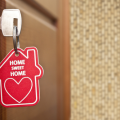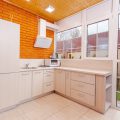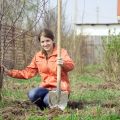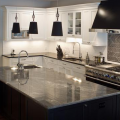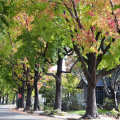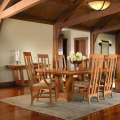If you are working on a building project, you are going to need lumber. Whatever size project you’re undertaking, you will need some kind of wood to build with. Buying lumber, however, usually isn’t as easy as walking in a buying the first board on the shelf. There are many different varieties to choose from, each with unique characteristics that suit them for distinctive projects.
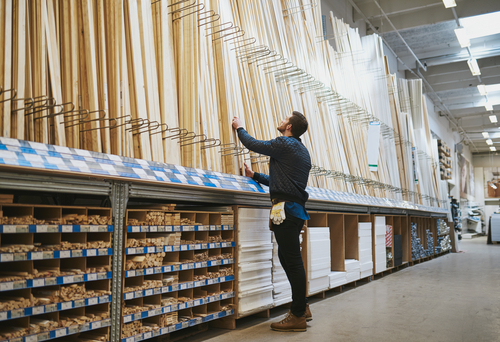
Here is a guide that will help you shop for lumber in your area and choose the best type of wood to suit your particular project.
Hardwood vs. Softwood
You’ve probably heard the terms “hardwood” and “softwood” before, but what exactly do they mean? And how do they affect your lumber purchase? Hardwood is harvested from deciduous trees, like oak, cherry, mahogany, etc and (as you would expect) is generally harder, stronger and typically more expensive than softwood. Softwoods are usually derived from faster growing coniferous trees, such as cedar and pine. There are some exceptions to the rules, as there are some ‘hardwoods’ that are softer than a lot of softwoods; balsa, for example and there are softwoods, like yew, that are more dense than many hardwoods. The species, density, appearance and cost are all factors that determine the primary function of different wood types. Hardwoods are generally used for furniture and interior products, like cabinets and flooring, whereas softwoods are primarily used for framing and general construction. .
- Buying Hardwood
Before you make any choices as to what lumber you’re going to buy, you should have a full plan of what your project is and what materials are best suited to it. If you’re building a cabinet, furniture or installing a wood floor, then you’ll probably want some type of hardwood.
Hardwood is graded by the National Hardwood Grading Association and can comes in four grades. The grade of the wood is best described as its visual quality; the association checks each piece of lumber for blemishes before assigning a grade. The highest grade a hardwood can receive is FAS (for First and Second). After that, there is No. 1 Common, No. 2 Common and No. 3 Common. The grade will of course affect the price of the wood, and exactly which grade you need will depend on how visible the wood will be in your project.
Aside from the grade, the species and appearance of hardwood has a dramatic effect on a project. There are far too many varieties to list all of them here, but a few examples include:
Walnut – This is a light to dark brown wood with a wavy grain. It is easy to work with and holds stains well, which makes it an excellent choice for building furniture or cabinetry.
Oak – Another hardwood that is light to dark brown in color, this wood is much more difficult to work with but is incredibly resilient, which makes it great for using in wood floors or other projects that are expected to hold up to a lot of stress.
Cherry – This wood comes in a more reddish color and has a straighter grain than walnut does. Like walnut, it is easy to work with and is often used to construct doors or for decorative purposes on boats.
Maple – The wood of this tree is lighter in color than the others mentioned; it is almost whitish in appearance. Maple is moderately strong and can be used for many projects around the home such as cabinets, chairs, bed posts and other furniture.
- Buying Softwood
Softwoods are graded completely different than hardwoods. The grading is dependent on what the wood is intended to be used for. If it’s used for a construction project, it will be graded based on its strength; whereas if it’s intended to be used for woodworking, it will be graded based on its visual appearance.
The grading is done by different organizations depending on location. In the Oregon area, the West Coast Lumber Inspection Bureau assigns grades based on structural integrity and appearance. Defects such as cracks, bends, warping and knots determine the final grading and functional use. . As with hardwood, you should always check the grade before making any purchases.
Since softwood tends to be more vulnerable to moisture and the elements, treating the wood can prevent damage. You should choose a softwood that has been pressure treated if you intend on using the product in contact with the ground, a foundation or if it will be exposed to the elements for an extended period of time
Some of the more popular softwood species are:
Douglas Fir – This is used in construction framing or in the creation of plywood. Douglas fir is strong, lightweight and durable.
Pine – Popular in moulding, trim and flooring, pine is a denser softwood that has reddish streaks in otherwise light-colored wood.
Cedar – Cedar species are naturally resistant to bugs and the elements and are therefore useful in outdoor projects, such as fences, swing sets, decks and greenhouses.
Other things to look for
In addition to variety, there are several other things you’ll want to check when shopping for lumber. First, make sure you’re using a reputable supplier. Check any lumber you’re purchasing for damage such as cracks, warps and other defects. You will also want to consider the moisture content of the wood and the average humidity in the area you are planning to build. These conditions will affect the final outcome of your project as well.








